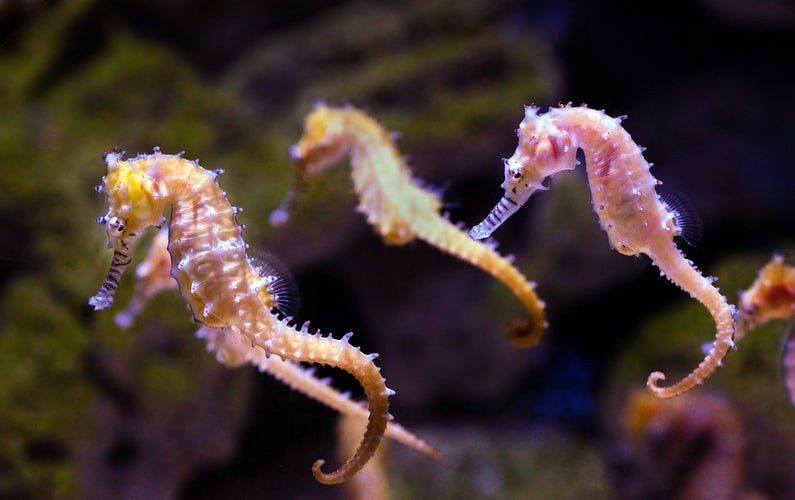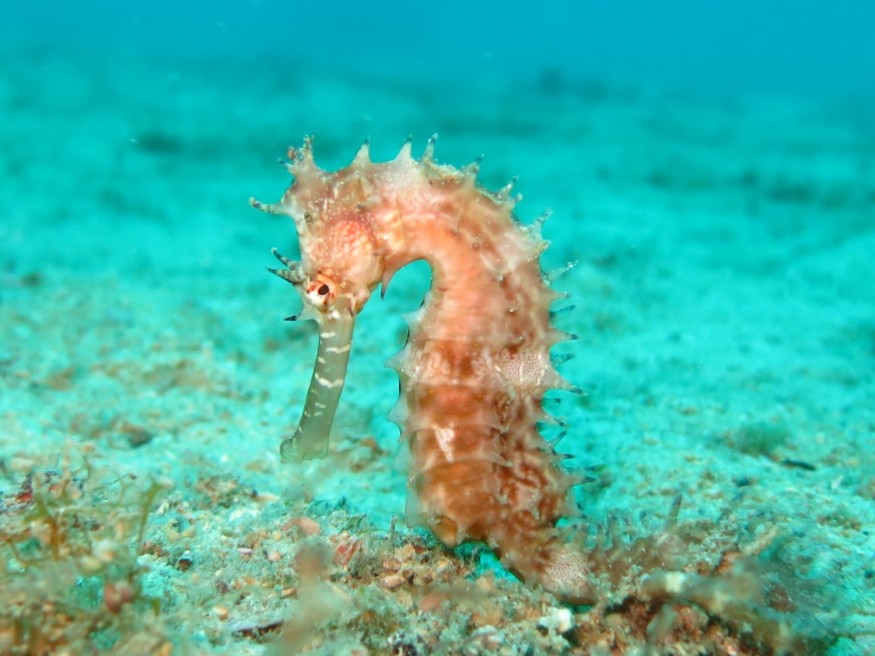Seahorses are extremely poor swimmers. Surprisingly, though, a species or two can be found in all of the oceans of the world. A group of researchers studied, on the basis of approximately 360 separate seahorse genomes, how these unique fish were able to spread so successfully worldwide.
It was possible to recreate the dispersion paths of seahorses worldwide based on an evolutionary tree of 21 species and to clarify where and when new species appeared.

Related Article: New Study: Prehistoric Fishes Had Limbs and Developed Lungs, Similar to Humans
Deep Dive
From a developmental biology viewpoint, the international research partnership involving the research team headed by evolutionary biologist Professor Axel Meyer at the University of Konstanz and researchers from China and Singapore was able to recognize factors that led to the success of the seahorse: its speed to adapt, for instance, by repeatedly evolving spines in the skin and its rapid genetics. The findings will be published in Nature Communications on 17 February 2021.
Around 25 million years ago, the genus Hippocampus's seahorses originated in the Indo-Pacific region from pipefish, their nearest relatives. And although the latter usually swim fairly well, seahorses lack their pelvic and tail fins and instead have developed a prehensile tail that can be used to hold on to seaweed or corals, for example. They separated into two major groups early on.
Dispersion
Dr. Ralf Schneider, who is now a postdoctoral researcher at the GEOMAR Helmholtz Centre for Ocean Science Kiel, says that one population stayed mostly in the same area, while the other dispersed across the world and participated in the study while serving as a doctoral researcher in the research team of Axel Meyer. In their original home waters of the Indo-Pacific, the remaining species diversified into the Indo-Pacific.
The vast amount of data gathered for the study helped the research team to create an accurate seahorse tree that demonstrates the relationships between species and the seahorse's global dispersal routes. "If you compare the relationships between the species to the ocean currents, you notice that seahorses were transported across the oceans." says evolutionary biologist Dr. Schneider.
If, for example, they were swept out to sea during floods, they used their gripping tail to grab onto something they could reach, such as a bit of algae or a tree trunk. There are areas where animals have long been able to survive. Those "rafts" were frequently washed hundreds of kilometers through the ocean by the currents until they arrived somewhere where the seahorses could get off and find a new home.
Adaptability

Since seahorses have been around for more than 25 million years, it was essential to consider that as tectonic plates shift-ed, ocean currents have shifted over time. For one, the Tethys Ocean was almost as big as today's the Mediterranean Sea around 15 million years ago. It was linked to the Atlantic Ocean on the west shore, where the Strait of Gibraltar is located today. This lead to the Indian Ocean on the east coast, where the Arabian Peninsula is today.
Not only did the seahorses migrate across the globe by ocean currents, but they were also remarkably good at living in new environments. Seahorses have significantly changed genomes, and they have shed certain genes, appeared with new ones, or acquired duplicates during their evolution. This means that, relative to other fish, seahorses adjust very easily. This is presumably why various kinds of "bony spines" have developed rapidly and independently of each other in certain environments to shield seahorses from predation.
ALSO READ: The Evolution of Glow-in-the-Dark Insects, Shows Study
For the latest news from the animal kingdom, don't forget to follow Nature World News!
© 2025 NatureWorldNews.com All rights reserved. Do not reproduce without permission.





